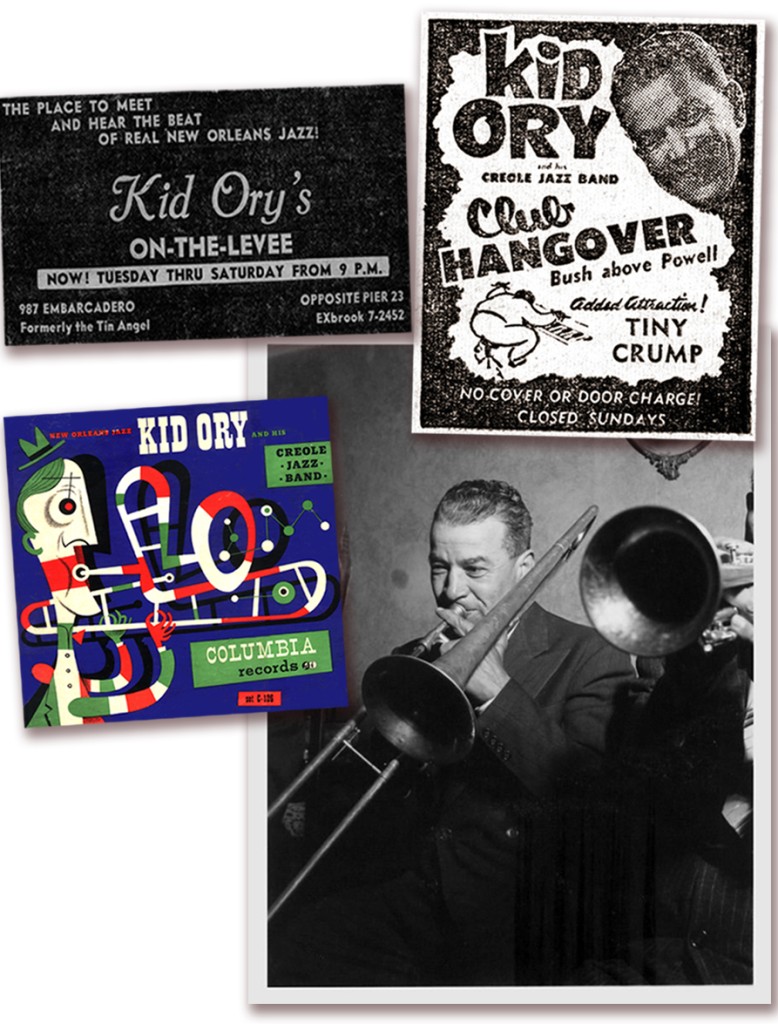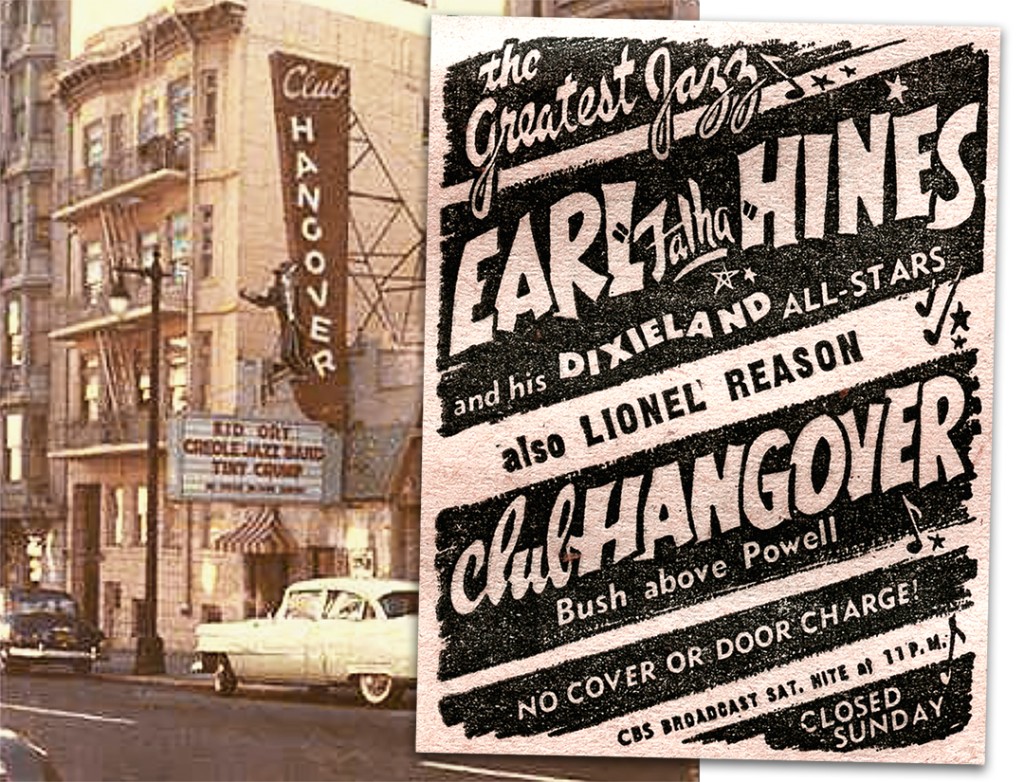 Club Hangover was the foremost Dixieland and New Orleans Jazz nightclub on the West Coast in the 1950s. The intimate nightspot featured music six nights of the week with a live Saturday night radio broadcast heard across the West. This narrative is offered as a comprehensive survey of the performers and circumstances of the fabled venue.
Club Hangover was the foremost Dixieland and New Orleans Jazz nightclub on the West Coast in the 1950s. The intimate nightspot featured music six nights of the week with a live Saturday night radio broadcast heard across the West. This narrative is offered as a comprehensive survey of the performers and circumstances of the fabled venue.
The nightclub’s roster rotated through bands run by major names of the Jazz Revival, often originally from Louisiana or the South. Veteran musicians enjoyed month-long residencies — Kid Ory, George Lewis, Earl Hines, Muggsy Spanier, Joe Sullivan and Jack Teagarden. Steady work drew many to reside in the relatively tolerant region.
Club Hangover was favored by tourists, located near the downtown hotels and just steps from the Powell Street cable car line. Independent owner/operator ‘Doc’ Dougherty had played clarinet and saxophone, led a hot dance band and was co-composer of the hit song, “I’m Confessin’ (That I Love You).”
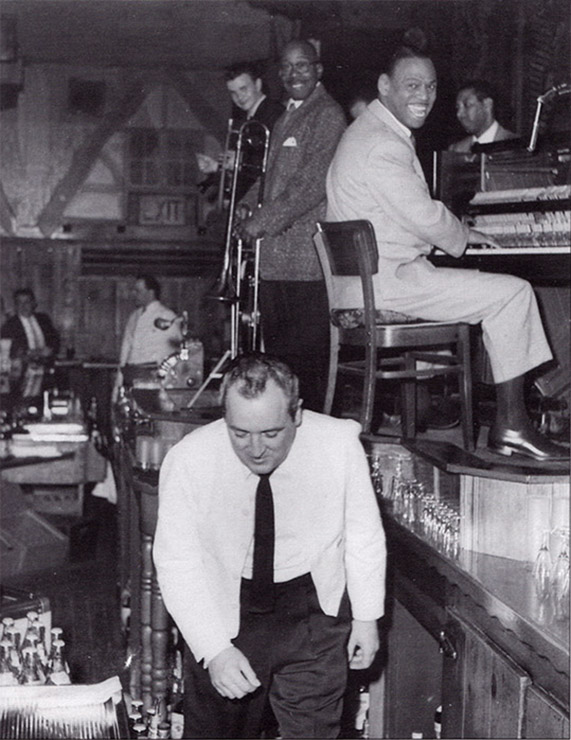
Six dozen recordings of complete shows have survived from the Saturday night radio broadcasts. Besides containing musical treasures, the Hangover tapes are a rich source of data and colorful detail from the marvelous monophonic Fifties. Much of the extant music has circulated over the decades on LP, CD or private copies. Numerous complete Club Hangover programs can now be easily found on the internet — thanks in no small part to yours truly.
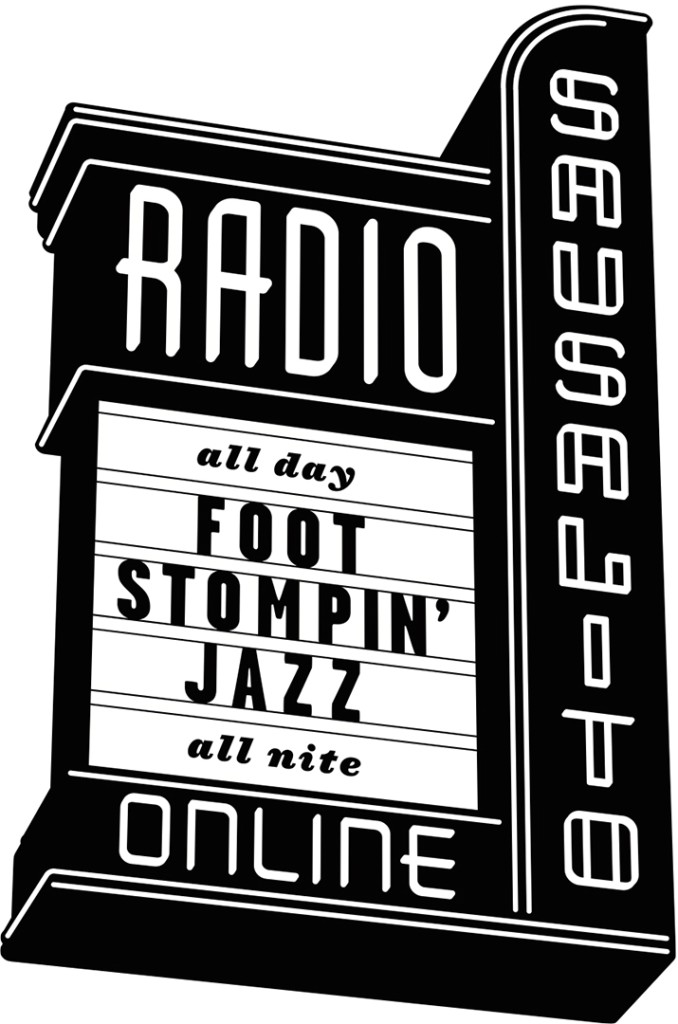 For instance, I am currently host and curator of the Club Hangover Revisited radio series in partnership with Radio Sausalito. We are sharing the complete original programs on Sunday mornings 9:00-9:30 am and 5:00-5:30 pm (Pacific time, USA) with new shows streaming each week at www.radiosausalito.org. Related audio and video may also be found on my Youtube Channel or on the Club Hangover Rarities or Club Hangover Archive pages of my website at JazzHotBigstep.com.
For instance, I am currently host and curator of the Club Hangover Revisited radio series in partnership with Radio Sausalito. We are sharing the complete original programs on Sunday mornings 9:00-9:30 am and 5:00-5:30 pm (Pacific time, USA) with new shows streaming each week at www.radiosausalito.org. Related audio and video may also be found on my Youtube Channel or on the Club Hangover Rarities or Club Hangover Archive pages of my website at JazzHotBigstep.com.
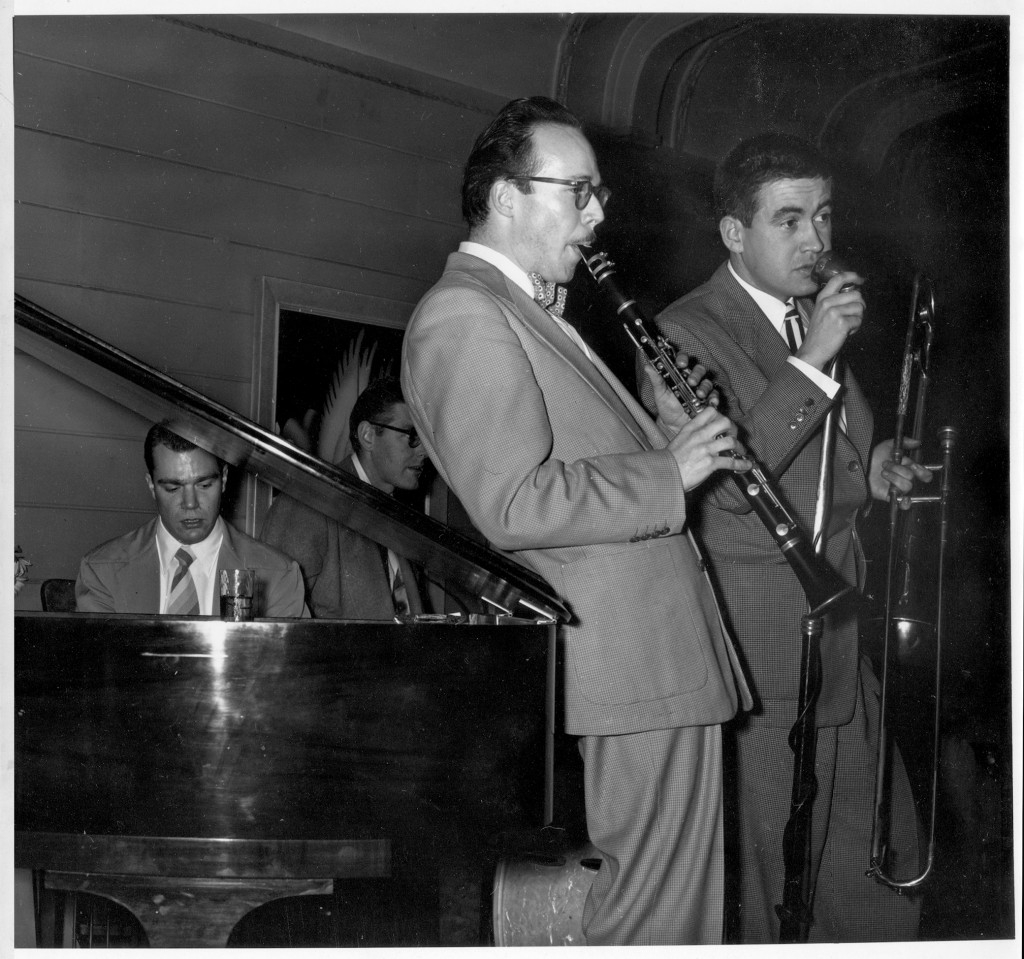
At the Jazz Band Ball
Club Hangover was a boon for African American musicians, New Orleans and Chicago Jazz old-timers who were enjoying their second, third or even fourth musical careers. An enclave of esteemed jazz elders was sustained by a vigorous ongoing revival of New Orleans and Traditional Jazz in San Francisco. Jack Teagarden, Kid Ory and Earl Hines performed regularly at the Hangover. Moving to the area both Ory and Hines operated local nightclubs for a few years.
In 1951 Club Hangover hosted a huge benefit concert for the ailing clarinet player Pee Wee Russell starring Louis Armstrong and Marty Marsala. Occasional special guests and jazz celebrities over the years included trumpeters Louis Armstrong, Wingie Manone, and Wild Bill Davison; reed players Sidney Bechet and Albert Nicholas; singers Jimmy Rushing and Billie Holiday; the Firehouse Five Plus Two; and a piano intermission by Lil Hardin Armstrong in 1954.
In the early days there were house bands run by trumpeters Marty Marsala and Bob Scobey or trombonists Turk Murphy or Jack Sheedy, who ran the very first house band. The club was dark on Sunday nights, but there were lots of Sunday afternoon jam sessions.
Edward “Kid” Ory (1886-1973) was a creator of the New Orleans tailgate trombone style. He recorded in the Classic Jazz era with King Oliver, Louis Armstrong and Jelly Roll Morton. A frequent headliner at Club Hangover he resided in the greater Bay Area intermittently through the 1950s and more than a dozen broadcasts survive. Becoming a noteworthy local luminary, he was generally accompanied by his longtime comrades, bassist Ed “Montudie” Garland and drummer Minor “Ram” Hall. He utilized a variety of trumpeters, clarinet players, drummers and piano players.
Sadly, by 1955 relations between Ory and Ed Garland, his bass player of fifty years, had badly deteriorated. “It exploded into a fistfight on the Club Hangover bandstand,” writes Hal Smith on the SFTJF/Stanford Libraries Kid Ory page “Ory hit Garland with a brass mute, but Garland managed to get in a punch that knocked Ory off the narrow bandstand. Doc Daugherty broke Ory’s fall, but the trombonist suffered broken ribs and an injured back.” The Kid hired other bassists after that. Garland worked for Earl Hines and others.
Trombonist Jack Teagarden (1905-1964) was an extremely popular headliner at Club Hangover. Grove Dictionary of Jazz grants him multiple superlatives: “one of the finest jazz singers. . . the finest of all jazz trombonists [and] one of the first white jazz musicians to master the blues.” Trumpet and flugelhorn player Jackie Coon and sister Norma Teagarden were featured in his bands. In those years Jack’s so-called “glass’n-a-half” routine was a stunning show-stopper. Removing the trombone slide he blew into an empty water glass, playing soulful blues.
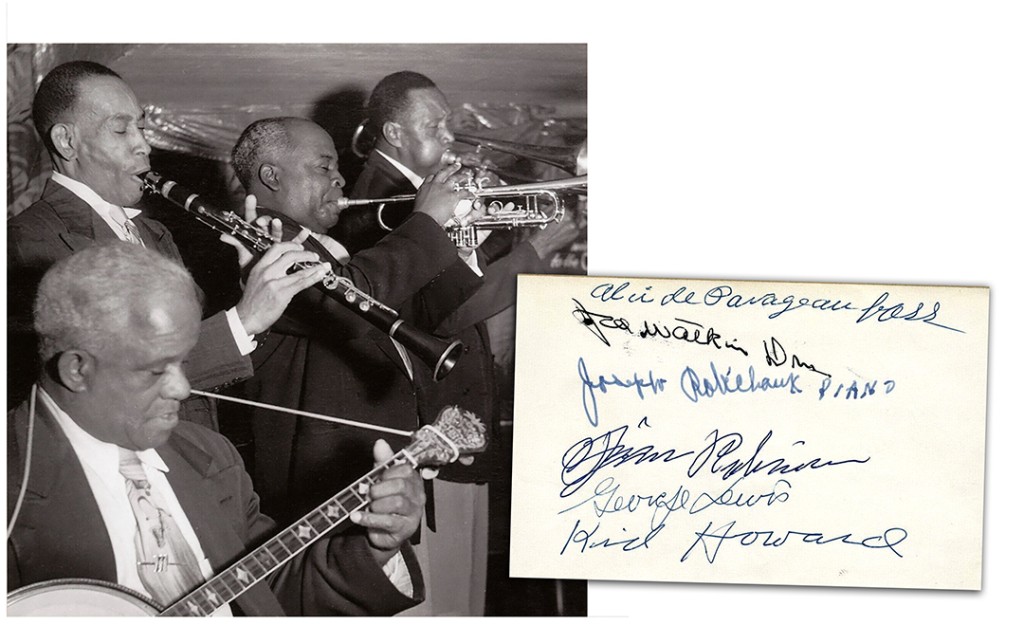
George Lewis (George Joseph Francois Louis Zenon, b. New Orleans 1900 – d. 1968) taught himself clarinet at age eighteen. He played in legendary New Orleans bands as a youth: Black Eagle, Eureka Brass Band and Olympia and with Buddy Petit, Chris Kelly, Kid Rena, Kid Shots Madison and Bunk Johnson’s 1931 band. Grove Dictionary asserts that by 1950 “Lewis had become established as the seminal figure of the emerging New Orleans revival” noted for his “rapid filigree and seamless registral crossing . . . technically fluent and highly individual style.”
Making numerous trips to San Francisco, he recorded and performed at Club Hangover in 1953 with a band of towering New Orleans Revival exemplars. National and international touring took him to England, Denmark, Sweden and Japan three times. Lewis enjoyed a cozy residency at “Preservation Hall” in New Orleans from 1961 until his passing in 1968.
Earl “Fatha” Hines (1903-1983) blended talented younger musicians and well-known veterans, like trombone players Dickie Wells or Jimmy Archey in his ensembles. “Doc” Dougherty allowed him a broad stylistic range for the hybrid Jump-Swing/Dixieland style he was offering in those years. Hines was a fundamental early jazz innovator; his “trumpet style piano” had made the keyboard a voice equal to the frontline horns. His clearly enunciated piano lines were picked up well by the radio broadcast microphones.
Francis “Muggsy” Spanier (1901-1967) flourished at Club Hangover, both as a bandleader and all-star guest. One of the bright lights of early White Chicago Jazz, his King Oliver-inspired middle-range cornet line conveyed a wide range of moods and repertoire, from sunny Dixieland flag-wavers to tear-jerking ballads. His famed 1939 “Ragtime Band” records made Muggsy a standard bearer for the revival of New Orleans polyphonic ensemble jazz. Settling permanently in the San Francisco area after 1957 he was popular around town and beloved by jammers at Pier 23.
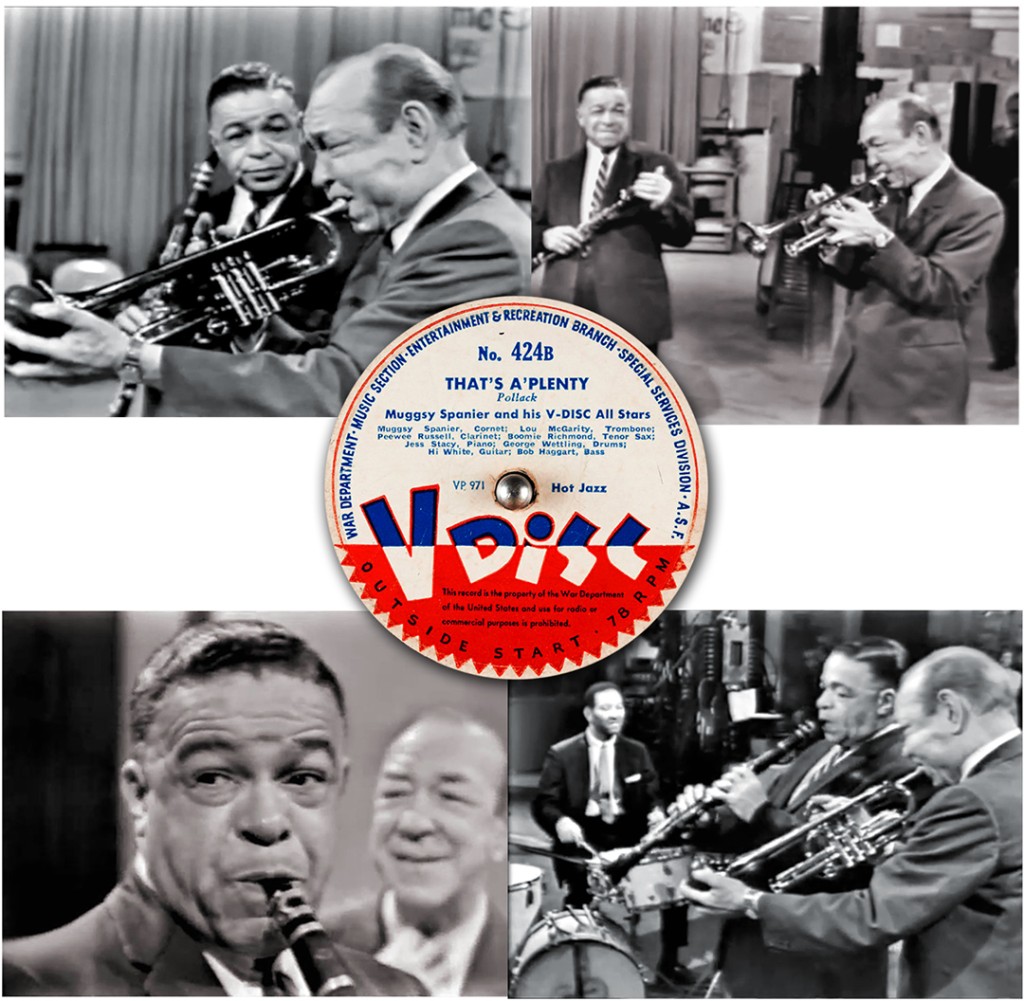
Darnell Howard (1895-1966) was Spanier’s preferred clarinetist in that decade. His distinctive voice was never more luminous. Performing since before 1920, Darnell had worked for W.C. Handy, King Oliver, Fletcher Henderson, Kid Ory and for Earl ‘Fatha’ Hines in two stints: playing violin, clarinet and alto sax in the Chicago the Grand Terrace Ballroom orchestra 1931-37 and later on clarinet in San Francisco.
String bass player Truck Parham (1911-2002) gigged with Spanier from 1950-55. He’d studied under bass master, Walter Page and in the 1940s was with pianists Earl “Fatha” Hines, Art Tatum and Art Hodes. A former boxer, Truck was brother of Chicago bandleader Tiny Parham.
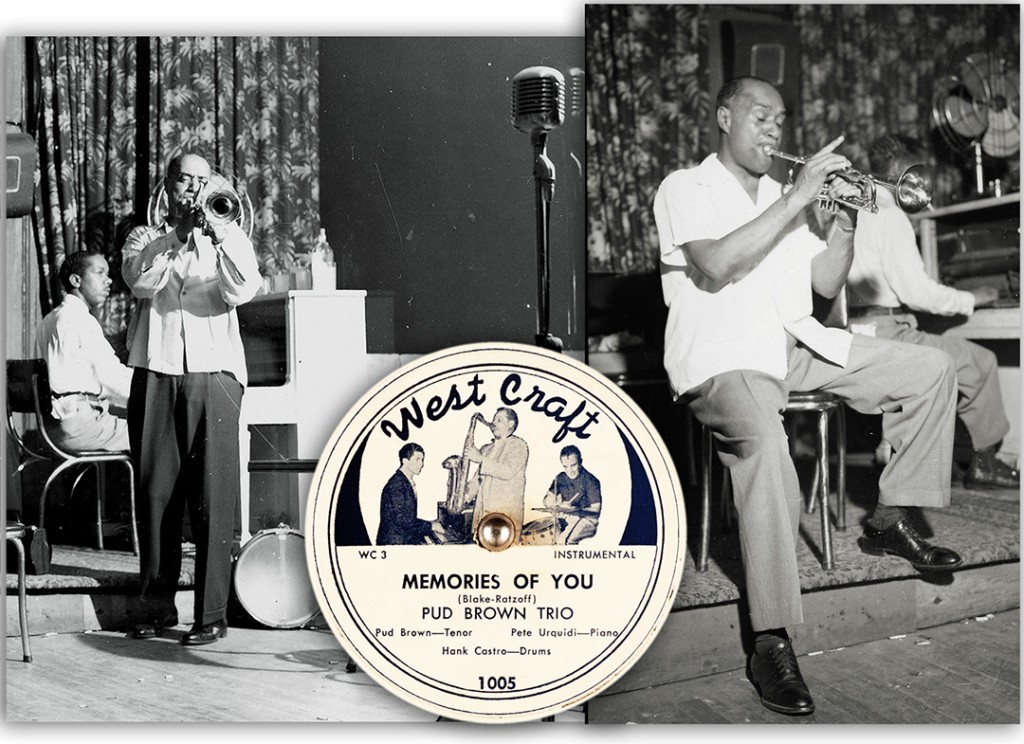
Lee Collins (1901-1960) was a New Orleans-born trumpeter taught by professor Jim Humphrey who began playing in legendary Crescent City bands at age twelve. Grove Dictionary of Jazz calls him a “lyrical, exciting and powerful player with a broad tone” showing influences of New Orleans trumpeters Kid Howard, Henry “Red” Allen and, quite distinctly, Louis Armstrong. He worked in New York with King Oliver and Luis Russell, recorded with Jelly Roll Morton and played with Mezz Mezzrow, Art Hodes and Don Ewell. Collins moved to San Francisco around 1953. But he soon returned to Chicago, his former gig at the “Victory Club” and working with trombonist Miff Mole.
Albert “Pud” Brown (1917-1996) played reeds and in later years doubled on trumpet and cornet. He began performing very young in a family band and then theater orchestras. During the 1930s he worked with saxophonists Jimmy Dorsey and Bud Freeman in Chicago. From 1945 to 1973 Brown was active in Shreveport, Los Angeles and San Francisco with Nappy Lamare, Jack Teagarden, Kid Ory, Ralph Sutton and Pete Daily. He continued touring and performed widely, from the “Blue Angel” on Bourbon Street to “The Famous Door” in New York, enjoying an active global career and long residency at the Palm Court Jazz Café in New Orleans into the 1990s.
Loring “Red” Nichols (1905-1965) played charming, nuanced interpretations of American standards, popular tunes and jazz classics in a brash Dixieland style. Beginning in 1927 his Five Pennies recorded hundreds of titles featuring the most gifted white musicians of his generation and he was compared favorably to Bix Beiderbecke. Disbanding before WWII, he re-launched the the Pennies in Los Angeles in 1944, becoming very successful. Key associates vital to the latter-day band were drummer “Rollie” Culver from 1941 onward and bass saxophonist Joe Rushton who joined in 1947. A star-studded but mostly fictional 1959 theatrical biopic “The Five Pennies” generated fresh demand for Red, leading to tours of the US, Europe and the Far East.
Jazz trumpeter Teddy Buckner (1909-1994) settled on the West Coast in 1924 (and is not be confused with jazz saxophonist Ted Buckner). His substantial career includes joining Buck Clayton in Shanghai (1934) and multiple stints with Benny Carter and Lionel Hampton. An unabashed follower of Louis Armstrong, Buckner used mutes to create his distinctive sound, launching his own Dixieland group featuring Joe Darensbourg (clarinet, soprano sax) at a 1955 Club Hangover residency.
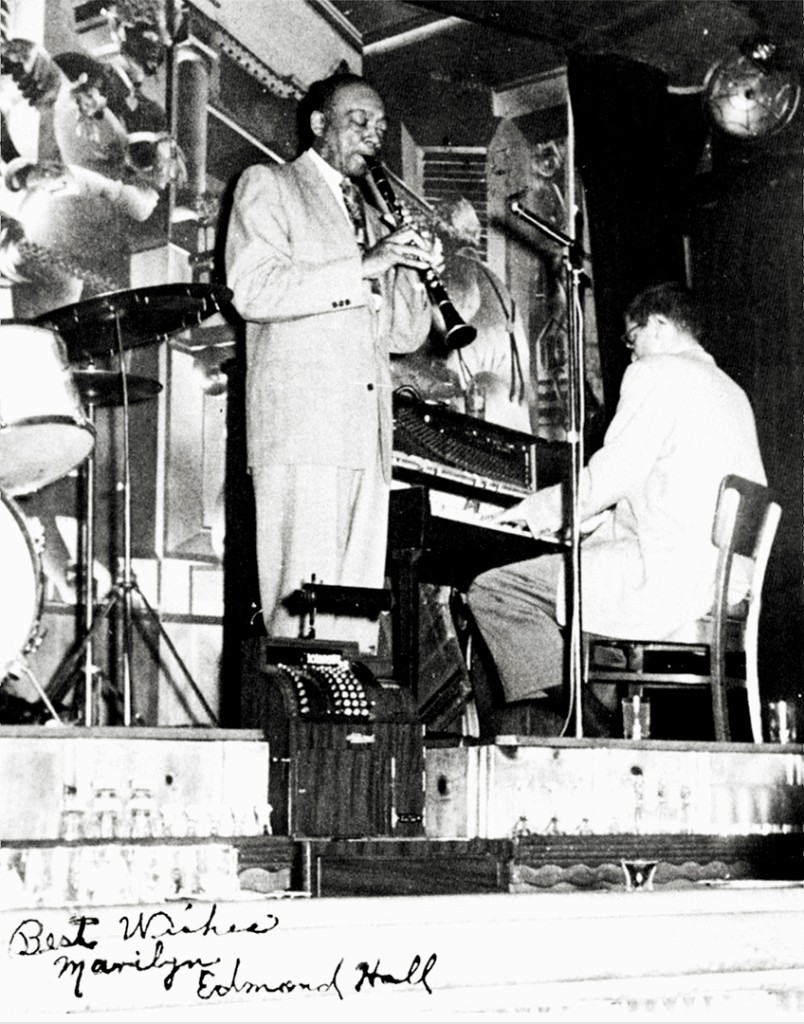
Ralph Sutton (1922-2001) was born in St. Louis, took classical piano lessons at age nine and was playing dances by eleven. He taught himself Harlem Stride piano by listening to radio and the music of Fats Waller. In the 1940s he worked with Jack Teagarden and joined Eddie Condon at his club or on the radio. Grove Dictionary describes his keyboard style as “robust but tastefully controlled . . . an impeccably precise sense of rhythm and an ebullient dancing quality [playing] jazz standards, popular songs and melodic innovations of remarkably expressive power and vitality.”
Moving to San Francisco for a while Sutton performed at Club Hangover and “Easy Street” with a combo of Edmond Hall (clarinet), Walter Page (bass), Charlie Lodice (drummer) and occasionally, trumpeter Clyde Hurley. Touring and performing internationally Sutton played through the 1990s with undiminished drive and virtuosity.
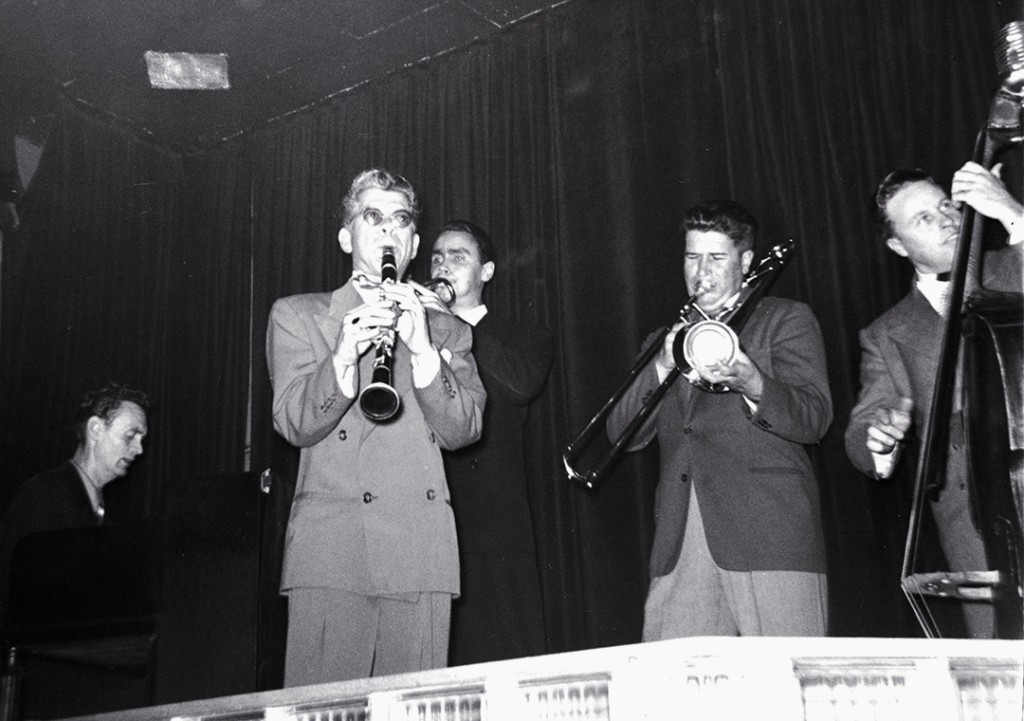
That’s A Plenty
Guaranteeing the hard-driving Dixieland sound that club boss “Doc” Dougherty expected, these rollicking six-piece bands were staffed by stellar sidemen. Among the illustirous musicians and New Orleans legends packing the ensembles were bassists Ed “Montudie” Garland (Ory, Hines) and “Pops” Foster (Spanier, Hines); drummers Minor “Ram” Hall (Ory), Ray Bauduc (Teagarden) and Barrett Deems (Spanier). Others were quite famous dating back to the 1920s, such as clarinet players Joe Darensbourg (Ory, Buckner) and Edmond Hall (Sutton, Spanier). Noteworthy pianists in Hangover bands included Don Ewell (Ory, Teagarden), Red Richards (Spanier) and Norma Teagarden, playing with her brother Jack.
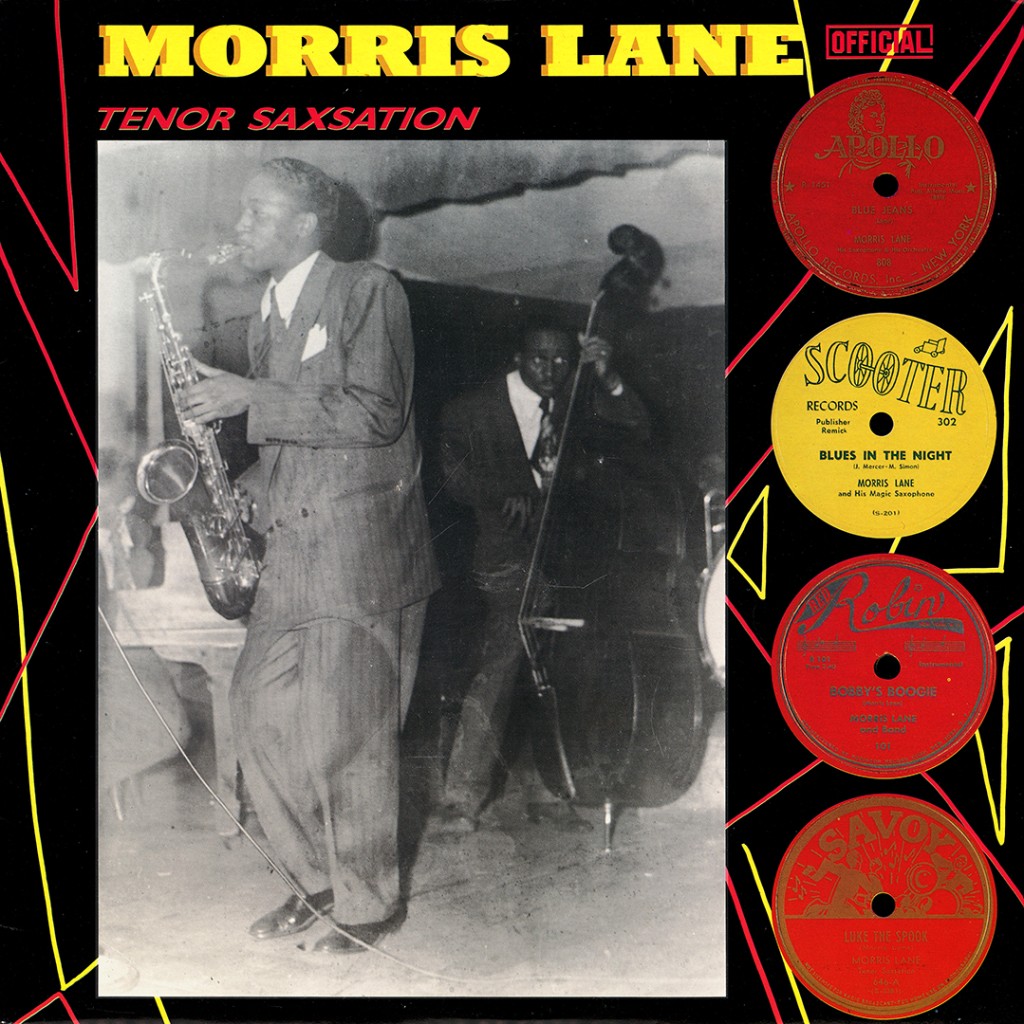
Brilliant younger musicians often worked with these older leaders like reeds player George Probert and pianist Don Ewell with Kid Ory. Talented musicians from the next generation were often found playing alongside living legends: trumpeters Alvin Alcorn (Ory) and Jackie Coon (Teagarden, Hines); and local drummers Cuz Cousineau (Spanier) or Earl Watkins (Hines, Spanier, Ory). (Earl is not to be mistaken for New Orleans-born drummer Joe Watkins, 1900-1969, who played at the Hangover with George Lewis among others.)
There are almost no singers found among the nearly six dozen surviving program tapes. The noteworthy exceptions are singer Lizzie Miles with George Lewis. And Velma Middleton, who was essential to Satchmo’s act when he played the Hangover in January 1954. There were occasional group vocals, and one unofficial appearance by Billie Holiday. Owner/operator Dougherty deftly avoided the loathed Cabaret Tax, by foregoing featured singers, dancing and food service.
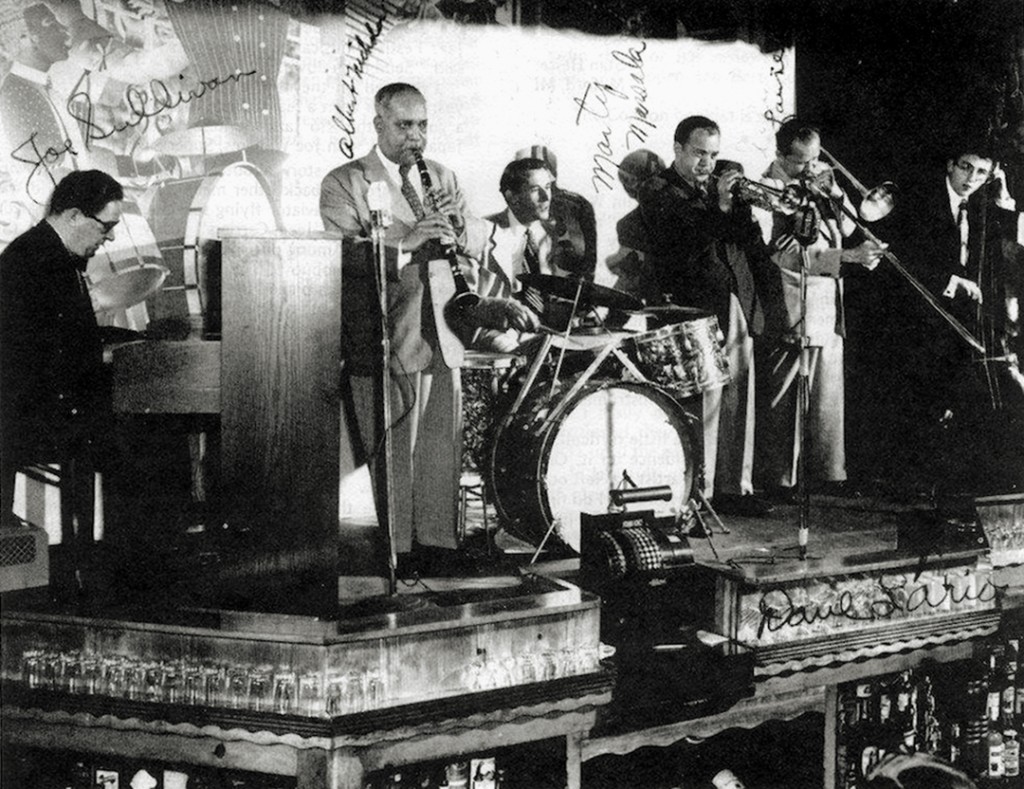
The Gin Mill Blues
Club Hangover featured high-profile intermission piano players who were stars in their own right. Advertised attractions, they were included on the broadcasts: Joe Sullivan, Meade Lux Lewis, Don Ewell, Tiny Crump, Lionel Reason and Fats Pichon.
Joe Sullivan (1906-1971) is described by the Grove Dictionary as “improvising with tremendous animation and ferocity.” A child prodigy, he studied classical piano graduating from the Chicago Conservatory at age seventeen. He began playing in silent movie theaters, joined dance bands and excelled. Originally O’Sullivan, his first union card was misprinted, and he kept the name. Joe was soon working with the top names in jazz and American entertainment. In the early 1930s Sullivan worked for Bing Crosby (1933) and was prominent in brother Bob Crosby’s Swing Orchestra (1933-36). Promoted by John Hammond, he soloed on records and at the “Onyx Club” in New York. Sullivan wrote two big hits: “Gin Mill Blues,” which became a jazz standard and “Little Rock Getaway,” a Harlem stride piano showcase.
Health challenges and alcoholism destabilized Sullivan’s career. Alternating between East and West coasts, he finally landed in relative obscurity in San Francisco and was heard regularly at local nightspots and Club Hangover. He played Kid Ory’s “On the Levee” nightclub and when Ory left town and it reverted to “The Tin Angel” Sullivan had a very good band there in 1963, also the year he appeared at the Monterey Jazz Festival and on Jazz Casual TV.
Jesse “Tiny” Crump (1906-1974) was born in Paris, Texas. Playing piano and organ, he worked on the TOBA Black vaudeville circuit for a dozen years and had one of the first African American bands on the radio in Kansas City. In 1927 Crump married blues singer Ida Cox and they collaborated on composing and recording, performing together into the 1930s. Re-emerging on the West Coast in the early Fifties, Crump played Club Hangover and made five record albums with trumpeter Bob Scobey.
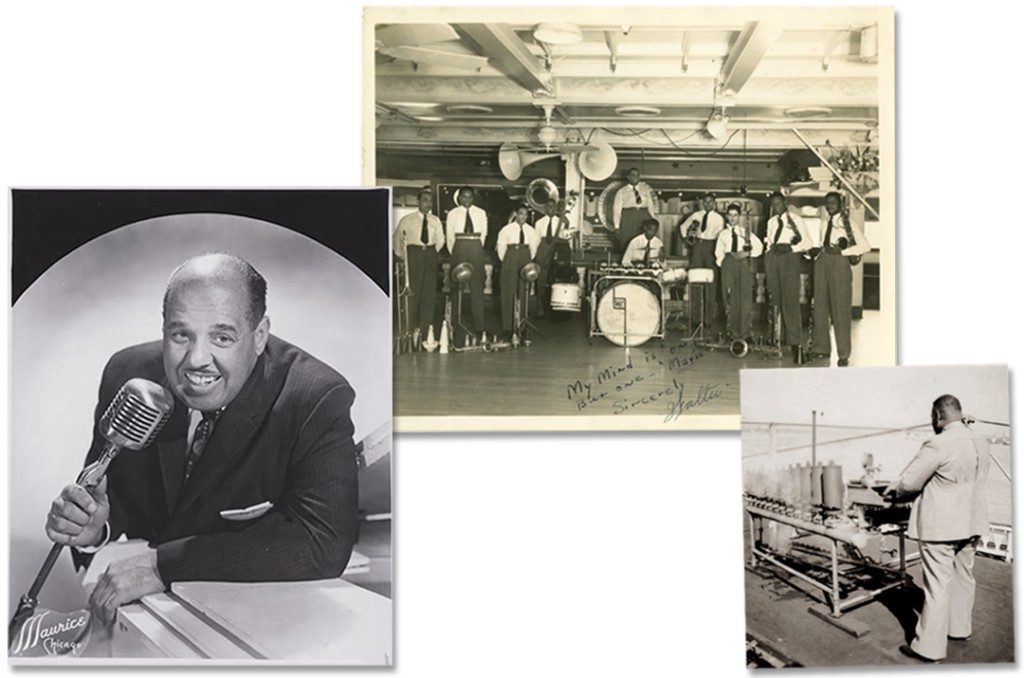
Walter “Fats” Pichon (1906-1967) was born and raised in New Orleans playing in brass bands at age fourteen and later ran what many considered the best big band in the Crescent City. He had early professional success in New York with Luis Russell and recorded with trumpeter Henry “Red” Allen, Joe “King” Oliver and Mamie Smith. He ran excellent orchestras on the Mississippi riverboats. Fats had a regular acting role on the beloved network radio comedy “Duffy’s Tavern” and enjoyed a longstanding residency at the “Old Absinthe House” on Bourbon Street in New Orleans through the 1950s.
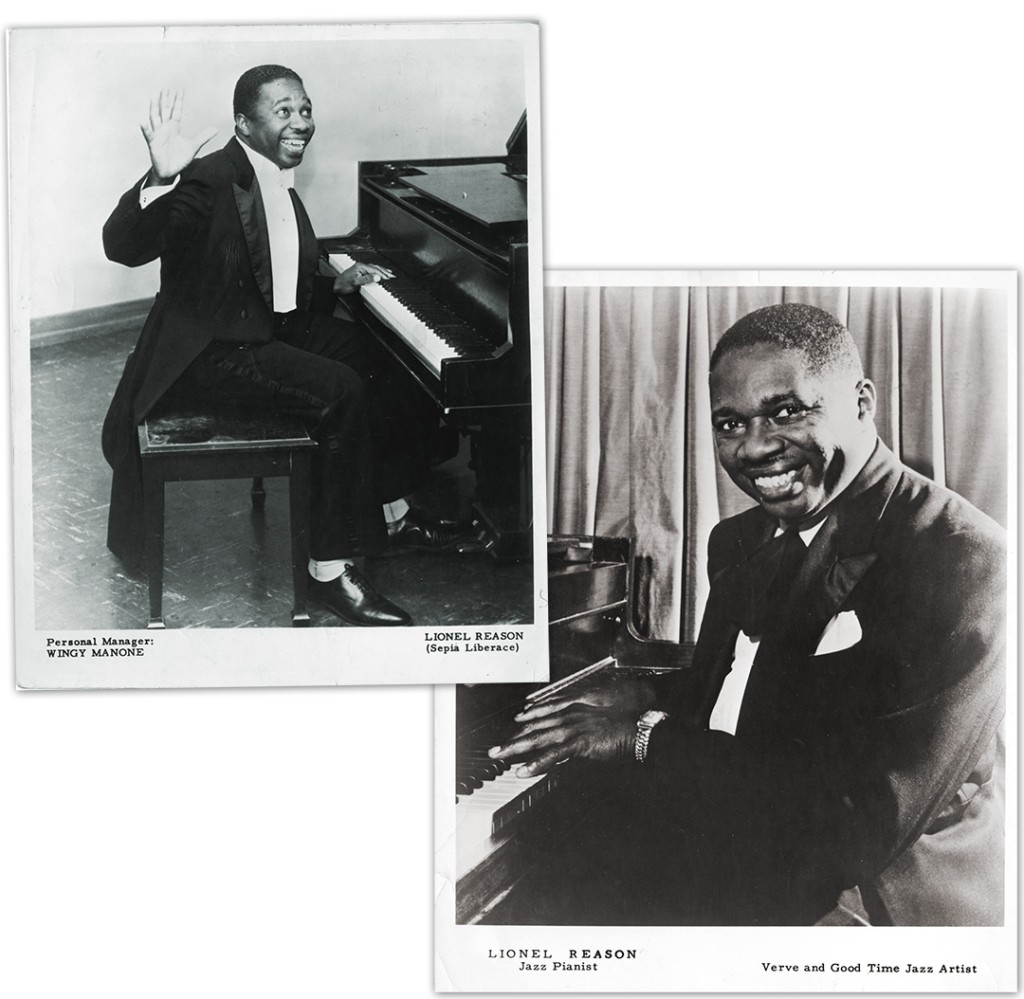
Lionel Reason (born 1909) was billed as the “Sepia Liberace.” He had a New Orleans heritage, dividing his talents between R&B music and classic jazz. On the Coast in the Fifties, he played piano intermissions at the Hangover and recorded with Kid Ory.
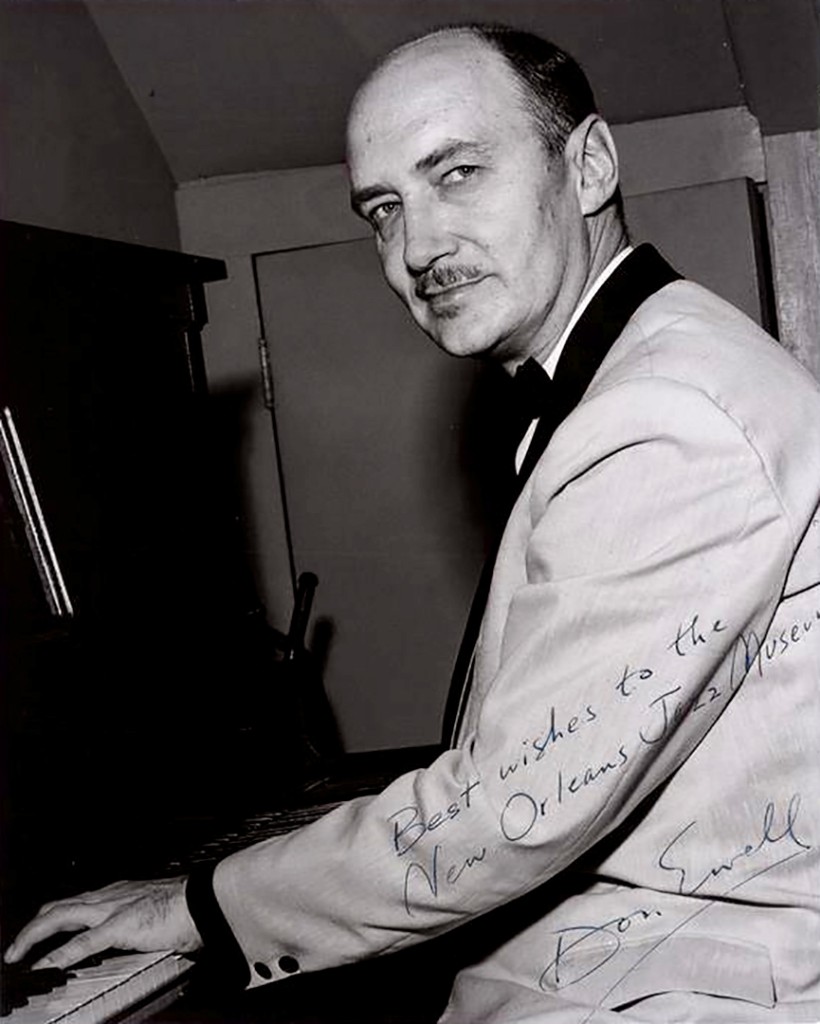
Donald Tyson Ewell (1916-1983) studied classical piano at Peabody Conservatory before leading trios and groups in his hometown of Baltimore. Through a close friendship with Jimmy Yancy he absorbed elements of the Chicago blues piano into his style while emulating Waller and Hines. He gigged with Bunk Johnson (1945-47), Spanier and Bechet. Moving West in 1953, Ewell joined Kid Ory and Jack Teagarden, touring internationally with Teagarden and on his own to Europe, Australia, Japan and England into the 1980s.
Meade Lux Lewis (1905-1964) was — judging by the high number of his appearances on the broadcasts — one of the most popular intermission pianists at Club Hangover. Childhood friends with Albert Ammons, they were a keyboard duo before 1925. Integral to the famed Boogie-Woogie Trio with Pete Johnson, they were featured by impresario John Hammond at the Carnegie Hall “Spirituals to Swing” concert in December 1938, leading to vast national success on records and network radio. Calling him one of the “most important figures of the Boogie-Woogie craze of the late 1930s” the Grove dictionary praises his “technical ability, energetic cross rhythms and remarkable invention.”
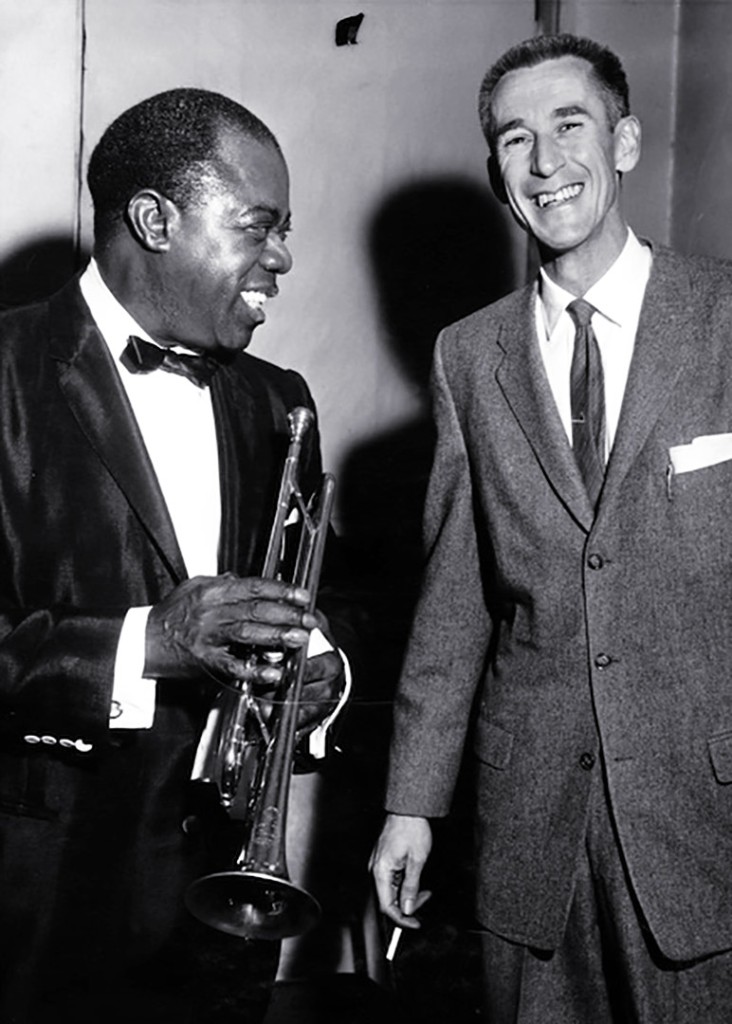
Drummer Harold Bruce “Smokey” Stover (1918-1974) is not acknowledged in ANY of the usual jazz dictionaries or online sources. He was virtually “house drummer” in early Hangover days and in a couple of the name bands. Plus, with a bass player Stover usually accompanied the resident intermission piano player: Joe Sullivan, Meade Lux Lewis, Fats Pichon or others.
Born in Kansas, Stover worked with several little-known Swing-era orchestras and Louis Armstrong in 1951. He was active in Los Angeles, most prominently with Wild Bill Davison. In 1967 he joined Turk Murphy at the McGoon’s club, on a studio album and touring regionally. But his life ended mysteriously in Virginia City, Nevada due to an unfortunate confluence of financial windfall and bad company. (Great thanks and credit to jazz drummer Hal Smith for data on Stover.)
Jazz Me Blues
Contributing greatly to the success of the enterprise was a sustaining weekly live half-hour radio show emanating from the club on Saturday nights at 11:00 pm. For years, shows were broadcast on powerful clear-channel station KCBS-AM, beamed out to the Northwestern US, Western Canada and South towards Los Angeles. Each program included a tune by the resident intermission piano soloist and listeners were keenly urged to ‘come on down any night of the week except Sunday.’
The broadcast emcee before 1954 was a local radio personality Jimmy Lyons. He was something of a jazz activist and a co-founder of the Monterey Jazz Festival. Then, for a few years the host was a young KCBS employee, Bob Goerner. From about 1953 to ’58, Goerner and others made dozens of high-quality open reel audiotapes; full-fidelity monophonic line checks recorded directly from the dedicated broadcast telephone line to the station and preserved them for decades.
Bandleaders utilized on-air theme songs with which they were somehow associated. ASCAP/BMI rules entitled such tunes to an additional royalty payment. Although I can’t prove it, I strongly suspect that “Doc” Dougherty, a successful songwriter himself, arranged this extra perk for the bandleaders. Among the themes utilized were Muggsy Spanier “Relaxing at the Touro;” Fatha Hines “Deep Forest;” Kid Ory “Without You for an Inspiration;” Ralph Sutton “Checkin’ with Chuck;” Jack Teagarden “I Gotta Right to Sing the Blues;” and Red Nichols “Wail of the Winds.”
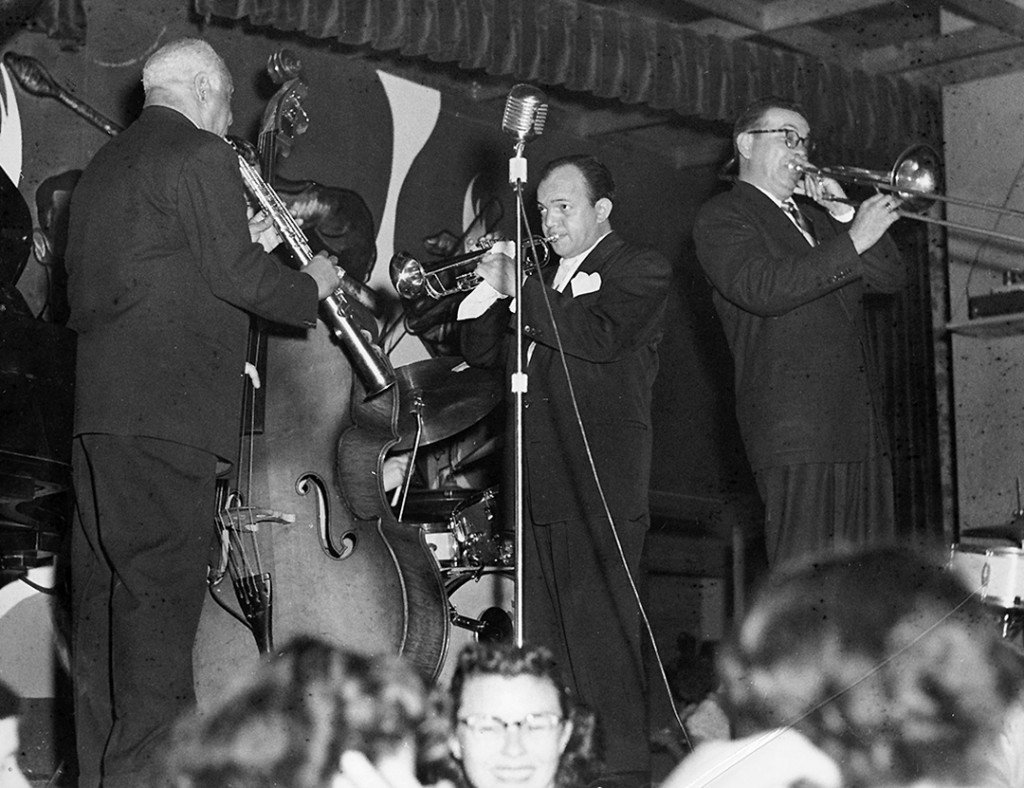
(What did I do to be So) Black and Blue
Racial segregation in popular entertainment persisted in most American cities well into the 1960s. In San Francisco, African American or mixed-race ensembles had long been strongly discouraged from performing in the Eastern part of the city encompassing the downtown hotels, Market Street, North Beach and the waterfront Embarcadero. It is worth noting that for decades the White-dominated American Federation of Musicians union (Locals 6 and 669) was largely responsible for policing the racial ban, and had long consigned Black musicians to a segregated, second-tier AFM Local 610.
Situated within this designated zone, owner Dougherty devised a clever work-around skirting the racist constraints. He placed a physical barrier – the liquor bar and bartender’s pit — between the mostly white patrons and predominantly Black performers. Musicians gathered on a shallow bandstand perched precipitously just above and behind the bar, as seen in accompanying photos, thereby maintaining a sufficient fig-leaf of racial separation.
Nonetheless, in practice such restrictions were increasingly disregarded, challenged in court or negated by the facts on the ground such as the mixed ensembles at Club Hangover, in the Tenderloin jazz bars, at North Beach nightclubs or near the Embarcadero where the Barbary Coast, a lawless quarter for drugs, booze and bawdy entertainment once flourished.
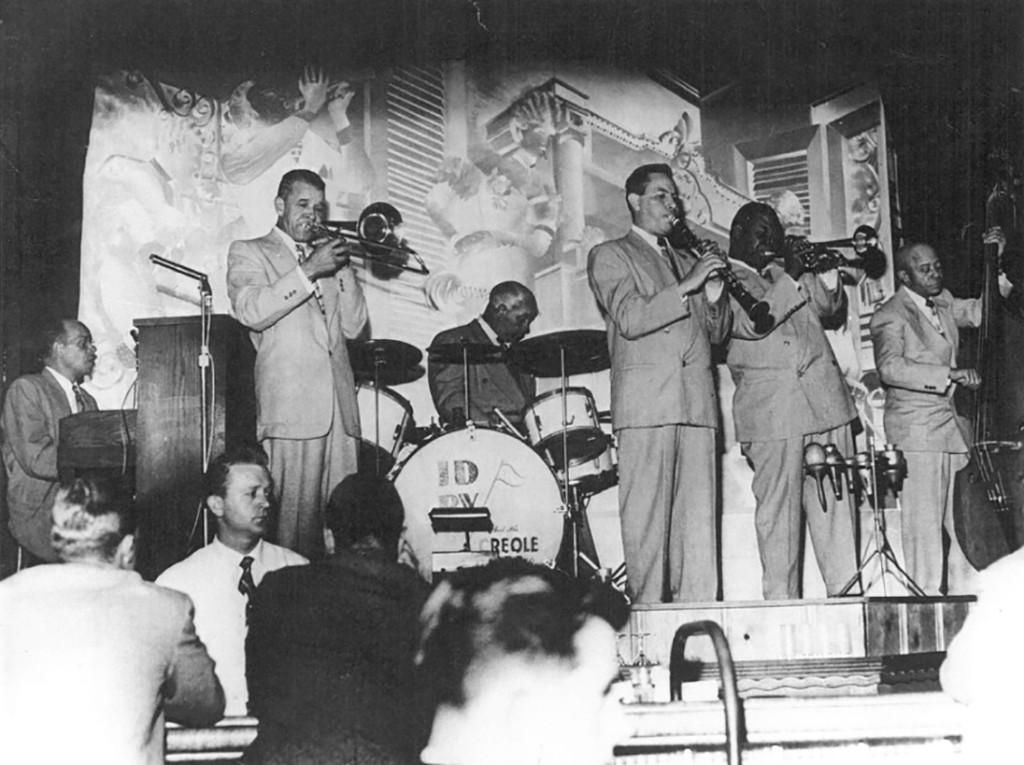
The Farewell Blues
“On Bush Street above Powell” from 1949 to 1961 Club Hangover was a magnet and benefactor for an august coterie of mostly African American jazz elders thriving in their mature years. Today, the extant radio programs can transport us to the flourishing Fifties Jazz Revival and sparkling effervescence of a Saturday night in mid-century Bagdad-by-the-Bay.
Thanks to Hal Smith for assistance and Radio Sausalito for access to their extended collection of more than seventy programs.
Sources:
An indispensable primary source is the extant radio broadcasts and my informal discussions in the early 1990s with Bob Goerner regarding the tapes.
“Racial Segregation and the San Francisco Musicians’ Union, 1923–60,” Leta Miller (Journal of the Society for American Music, 2007)
Grove Dictionary of Jazz (unabridged), Barry Kernfeld editor (MacMillan, 2002)
Club Hangover, Hal Smith, webpage of SFTJF/Stanford Libraries
https://exhibits.stanford.edu/sftjf/feature/club-hangover
Kid Ory, Hal Smith, webpage of SFTJF/Stanford Libraries
https://exhibits.stanford.edu/sftjf/feature/kid-ory
Muggsy Spanier, Hal Smith, webpage of SFTJF/Stanford Libraries
https://exhibits.stanford.edu/sftjf/feature/muggsy-spanier
Links:
Club Hangover Revisited Sundays 9 am, 5 pm (PST, USA)
https://radiosausalito.org/club-hangover-revisited
Earl Hines on Jazz Rhythm
https://exhibits.stanford.edu/sftjf/feature/earl-hines
Earl Hines & Fats Pichon at Club Hangover 1954
https://youtu.be/UAtK6ST3MQ4?si=UfOghtVEjbqU95gf
Club Hangover Archive on Jazz Rhythm (3 dozen complete Hangover shows)
http://www.jazzhotbigstep.com/105801.html
Club Hangover Rarities on Jazz Rhythm (curated radio programs)
http://www.jazzhotbigstep.com/16501.html
Joe Sullivan at SFTJF/Stanford
https://exhibits.stanford.edu/sftjf/feature/joe-sullivan
Don Ewell at SFTJF/Stanford
https://exhibits.stanford.edu/sftjf/feature/don-ewell
Darnell Howard at SFTJF/Stanford
https://exhibits.stanford.edu/sftjf/feature/darnell-howard
Muggsy Spanier on Jazz Rhythm (radio show)
http://www.jazzhotbigstep.com/108201.html
Muggsy Spanier & Darnell Howard on Jazz Casual television
https://youtu.be/I31-stq7H6s?si=X6m1kXrUREUFT1Aw
Muggsy Spanier 1953 Club Hangover Revisited 1953 –
https://youtu.be/zjxfmyBXrBE?si=pe11QKyj2BVrrRHD
Dave Radlauer Youtube channel
https://www.youtube.com/@daveradlauer8642
Dave Radlauer is a six-time award-winning radio broadcaster presenting early Jazz since 1982. His vast JAZZ RHYTHM website is a compendium of early jazz history and photos with some 500 hours of exclusive music, broadcasts, interviews and audio rarities.
Radlauer is focused on telling the story of San Francisco Bay Area Revival Jazz. Preserving the memory of local legends, he is compiling, digitizing, interpreting and publishing their personal libraries of music, images, papers and ephemera to be conserved in the Dave Radlauer Jazz Collection at the Stanford University Library archives.



